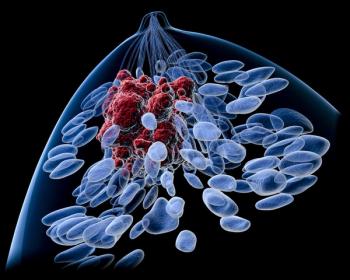
- ONCOLOGY Vol 15 No 6
- Volume 15
- Issue 6
Outline of Oncology Therapeutics
Outline of Oncology Therapeutics is a well-written, concise, and up-to-date book providing detailed descriptions of a variety of medications and issues important to the overall care and treatment of patients with cancer. Oncology practice today
Outline of Oncology Therapeutics is a well-written, concise,and up-to-date book providing detailed descriptions of a variety of medicationsand issues important to the overall care and treatment of patients with cancer.Oncology practice today demands that physicians, nurses, and pharmacists have,at the very least, comprehensive knowledge of antineoplastic agents,antiemetics, and analgesics. The intent of the book is to offer oncology careproviders from different disciplines quick and easy access to relevant clinicalinformation.
The first 10 chapters organize chemotherapeutic agents accordingto their mechanism of action: DNA-binding agents, antimicrotubule agents,topoisomerase inhibitors, regional therapy, and so forth. Each drug is describedsuccinctly by its uses, dosing schedule, pharmacokinetics, toxicity,recommendations for supportive care, pharmacy issues, and nursingconsiderations. When applicable, the US Food and Drug Administration (FDA)approval status and indication for approval of the chemotherapy drug arementioned. This information becomes important when discussing treatment optionswith patients.
Interestingly, newer investigational drugs includinghomoharringtonine, suramin, and valspodar are discussed, because of their use inclinical trials and promise of future FDA approval. Knowledge of these agents isimportant for practicing physicians in the community who may be treatingpatients enrolled in clinical trials.
By including categories such as supportive care and nursingconsiderations, within each chapter the editors emphasize a multidisciplinaryapproach to patient care. These chapters, written by well-recognized experts invarious fields, contribute to the clarity and organization of the material.
Other categories that would have added useful information butwere omitted from the book include drug-drug interactions and contraindications.Further, although general references to the main chemotherapy regimens areprovided, specific footnoted references to each of the listed dosing scheduleswould have been helpful.
The second part of the book focuses on the prevention andtreatment of toxicity and the complications of disease. This section isparticularly helpful to physicians in training and to those practicing primarilyoutpatient care. Algorithms for the management of hypercalcemia and a detailedchapter on neutropenic fever are examples of the excellent reviews ofcomplicated issues. Moreover, the antiemetic and analgesic chapters providetables that are easily referenced for quick answers.
Nonetheless, this section would have been more useful ifillustrations of common capsules and tablets, such as analgesic drugs, had beenincluded. Patients taking multiple medications often forget the names of theirmedication. It would be helpful to the nonpharmacist health-care provider to beable to reference a description of the pills with the drug names.
The last chapter of the book, which details various cathetersand pumps, is one of the most useful and informative. Due to the growing demandfor such instruments and rapid advances in technology, many different venousaccess devices are available. Each section of this chapter provides clearillustrations of frequently used devices and reviews the risks/benefits,clinical assessment, and issues related to teaching patients and their familieshow to use these tools. Thus, the information is not only valuable forphysicians and nurses, but also for patients.
Overall, Outline of Oncology Therapeutics is a comprehensiveresource that is both practical and useful. It will serve as an excellentaddition to any oncology health-care provider’s collection of references.
Articles in this issue
over 24 years ago
Coverage for New Oral Cancer Drugsover 24 years ago
Low Doses of Zoledronic Acid Reduce Complications of Bone Metastasesover 24 years ago
ASCO Welcomes Tobacco Billover 24 years ago
Barriers to Clinical Trial Enrollmentover 24 years ago
Tamoxifen Does Not Affect Sexual Functioning or Mood Swingsover 24 years ago
Risk Factors for Relapse of Cutaneous Melanomaover 24 years ago
Atlas of Cancer Surgeryover 24 years ago
Patient Care Costs in Cancer Clinical Trialsover 24 years ago
Dose Intensity for Breast Cancerover 24 years ago
Recent Developments in Chemotherapy for Bladder CancerNewsletter
Stay up to date on recent advances in the multidisciplinary approach to cancer.

















































































